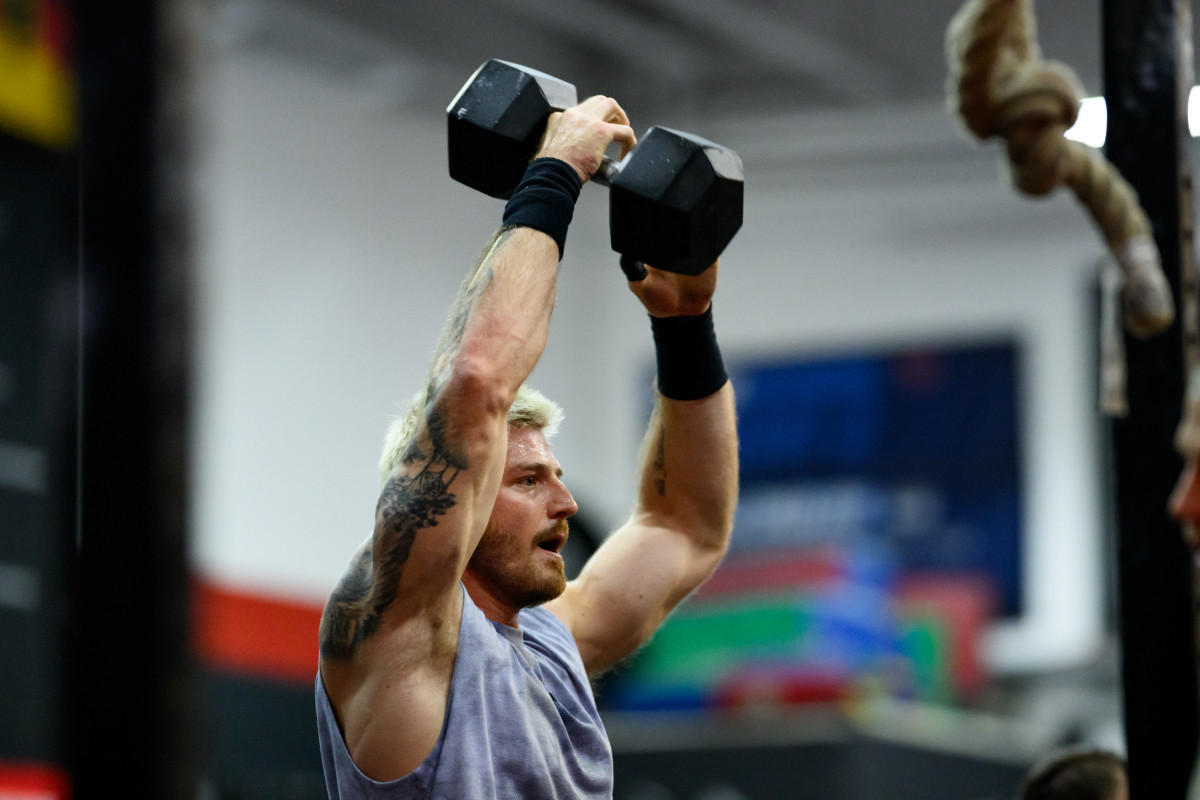Hybrid training has become one of the most popular workout methods, and it’s easy to understand why. Whether it’s the sole focus of reaping the benefits of combining strength and endurance, or simply a great option for those short on time, it’s become a go-to across the fitness landscape. While there is no shortage of advice, insight and best practices provided from top fitness experts across the internet, one very unique breakdown on muscle strength came from the coach of three-time UFC world champion Jon Jones, Jordan Chavez.
Chavez joined Mark Bell’s Power Project Podcast and discussed several aspects of hybrid training. Chavez went into detail with Bell and co-host Nsima Inyang, specifically revealing a few key tidbits that can benefit anyone following this workout method, from beginners to experts in hybrid fitness.
The Nutrition & Training Mistakes Most Men Make While Hybrid Training

During the in-depth conversation, Chavez provided some advice that can go a long way toward improving your muscle-building results while working out. However, before diving into that, the strength coach was also adamant about the importance of nutrition.
Chavez explained that many men who want to gain muscle aren’t eating nearly enough, and that there’s not nearly enough focus on the amount of protein they consume. He highlighted conversations with individuals who are lacking energy due to not intaking enough food and protein.
“If you’re trying to gain weight, I need to teach you how to eat first,” Chavez said. “…I need you to just be able to get calories in on a given day. And then once you learn how to consume the amount of calories needed just to support your actual weight…All right. You’re getting used to eating more calories…Now, I need you to actually pay attention to your protein consumption…”
A bit later in the conversation, the longtime strength coach stated a few key areas that he focuses on to improve strength gains for men, including a tip underlined by not repeating the same movements over and over.
“Max effort, dynamic effort, and repetition days—plus mixing in Olympic lifts and conditioning. The key is to counterbalance sport-specific overuse with pulling exercises, active recovery, and not just repeating the same movements or using gimmicks,” Chavez said.
He compares exercising to creating a meal that starts with the concept of just making a steak. Chavez points to adding things like rice, potatoes, veggies, etc., and then you can add more, which is similiar to the mindset of training.
“Same thing with training. Oh, let me add this. Now, let’s add this. You start adding all your sides to your training,” Chavez says. “Now, once we get our body accustomed to handling everything, I can push in these individual training sessions without feeling like it’s taking away. Now that’s when you really grow, because too many times people want to grow in one avenue at a time.”
To summarize, a few of the keypoints Chavez detailed regarding building muscle while hybrid training include:
- Increase caloric intake
- More protein in your daily diet
- Focus on adding different pieces to your workouts over time
- Utilize various exercises and different movements
Hybrid Athlete Secrets: Chavez’s Mindset on Strength, Speed, and Longevity
Among the many key takeaways from Chavez’s comments during this conversation, was a comment that highlighted his mindset and approach to building muscle through hybrid training. He explained the perfect balance that he strives for to target the most muscle gain while still having peak endurance and speed.
“I want to be as strong as the biggest guy in the room…I want to be as fast and agile as the smallest guy in the room,” Chavez said. “…That means I can go in and press 405 [pounds] and then do muscle-ups with a 145-pound dude that’s knocking out 20-30 muscle ups at any given time.”
It’s a great approach and one that effectively summarizes the goal of most athletes who utilize hybrid training. However, as Chavez correctly told Bell, the focus should be on longevity as opposed to “instant gratification.”
“I think biggest issue that people have is everyone online, first thing they do, ‘Oh, I’m going to do this 8-week program.'” Chavez explains. “Okay, well, what are you doing after that? ‘Oh, well, I’m going to go over and try this one.’ And no one is ever invested enough of their time to actually stick to something and see it out and see how much it works…”
“…because we’re not doing this for 8-week results. I’m trying to do this as a lifestyle. And so I want to see what I can do, what I could accomplish in one year, two year, five year, ten year…”
He goes on to offer a warning of sorts pointing the mindset behind instant gratification, and highlights the dedication that goes into this.
“Everyone is so used to instant gratification with, ‘Oh, I want something new. New stimulus, this, I’m scrolling, I’m doing this. Oh. 4 weeks, 8 weeks, 12 weeks, that’s all it takes to do what these individuals that they idolize are doing,'” Chavez said.
“And I’m like, you have to understand the years and time these individuals have put in to be just where they’re at, and they’re still not satisfied. That’s it. Takes time. It takes effort. It takes, all right, having your peaks, having your valleys in training…”
The success of Chavez’s entire breakdown on the mindset and approach to hybrid training comes with a “the proof is in the pudding,” when evaluating the career of longtime UFC star Jon Jones. Being a UFC fighter requires the ultimate combination of strength and speed, both of which (along with obvious unique skills), were integral to Jones becoming one of top UFC fighters in the world.
Related: Strength Coach’s ‘Perfect’ Chest Workout: Science-Backed Secrets to Faster Muscle Growth
